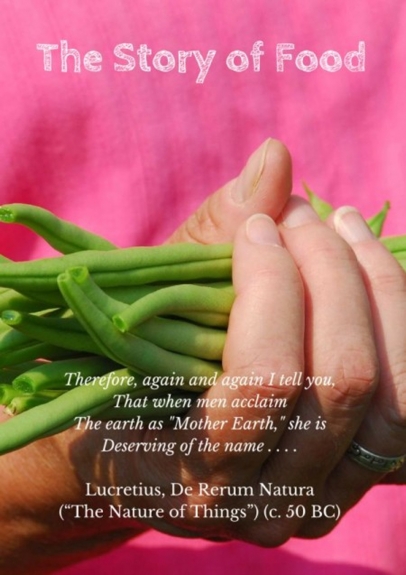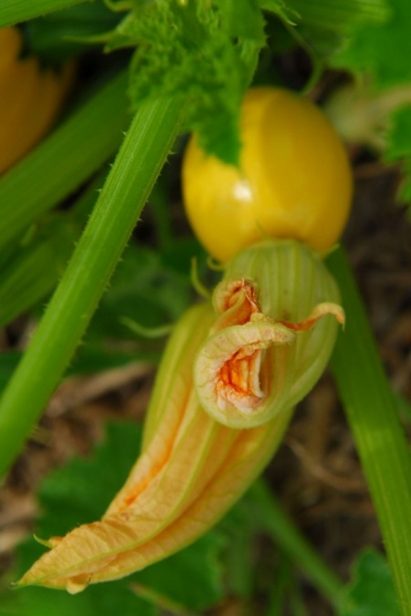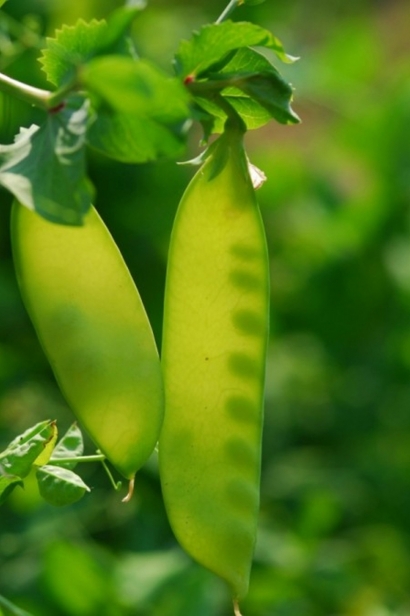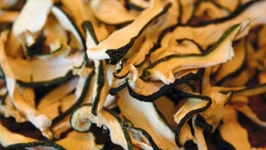The Story of Food
Life appeared on Earth about 3 billion years ago, but measured in geologic time, the story of our food began only lately. When our friends, the dinosaurs, roamed the earth before their extinction 66 million years ago, they mostly ate ferns and each other. There was nothing else. As reptiles, dinosaurs relied on the ambient temperature for warmth and, with a sluggish metabolism, they consumed comparatively little. In the millions of years when these reptiles reigned, the prospect of haute cuisine looked bleak indeed. Our ancestors then were pint-size, rat-like creatures.
The Angiosperms
But then a revolution occurred on which our species now depends. It gave us the fruited earth. This was the birth of angiosperms, or flowering plants.
As the age of reptiles came to a close, evolution developed a remarkable way to sustain a vulnerable seed until it germinates: By enclosing it in a hard shell packed with food, the seed is protected and nourished. Until the encased seeds appeared, all plants then existing reproduced, like mushrooms, by the release of defenseless and short-lived spores. With the angiosperms came a way for seeds to travel with the wind or on our ancestor’s tail, and grasses and other flowering plants quickly covered the earth. Our dirty planet turned colorful. And these seeds also provided a miraculous source of nutritious food for evolving mammals and birds.
With adequate food those insignificant rats propagated and grew in size. Sufficient nutrition fueled their body warmth and enabled constant movement even in cooler weather. And at a much later point, perhaps only a million years ago, our closer ancestors came down from the trees and began to run. Although without fangs or horns or hooves, but sustained by food and inspired by a larger brain, they learned to throw stones and swing sticks and later to make tools and, as we know, weapons. This incredible descent took place only a short while ago in Earth time. And we know where this evolution led: to us.
What is also remarkable in this story is how our forerunners then learned to take advantage of the growth of angiosperms.
And Then There Were Gardens
A mere 10,000 or so years ago, there occurred another revolution: agriculture. Humanity learned to cultivate seeds, ancient grains that gave us bread and much else to eat. And we learned to cultivate flowers, fruits, and vegetables, all nourished by a temperate climate, and with this we covered the earth. And with friendly fire we even learned to cook. As the anthropologist Loren Eiseley wrote in his essay “How Flowers Changed the World”: “The weight of a petal has changed the face of the world and made it ours.”
Today, removed from these gigantic revolutions, we take for granted the bountiful food supply on which civilization absolutely depends. Favored human beings on this planet are nourished by grains and vegetables, and we consume domestic animals and their milk fed by grass that we cannot eat ourselves, and birds fed by grain, and fish and mollusks sustained by organic matter grown or washed into the sea, and honey made for us by bees from pollen, and all kinds of fruits that enclose their own seeds, and the list goes on.
But to grow, plants must have the right amount of life-giving sunlight and adequate fresh water and a temperate climate. In the 17th century, the earth’s climate, apparently due to volcanoes and a lack of sunspots, cooled by just two degrees Fahrenheit. Droughts and years without summers cut off critical food supplies. Up to a third of Europe starved, as did Native Americans, and dynasties fell in China and India and wars and violence among humans spread everywhere. We are now—in the blink of a geologic eye—facing a climate warming by several or more degrees, and this time looming climate change is caused by our burning of fossil fuels and deforestation. The science is confirmed. Droughts and storms have already seriously upset the production of our food and promise much worse. For the first time in the evolution of life on this planet, this change in climate is manmade.
Almost everything we need (and are) comes from seeds grown, protected, and nourished by a stable and moderate climate. The story of our food celebrated by this brave magazine does not begin or end at our local market. This history did not begin yesterday.
The story of our food is no less than the story of our planet, as well as of our own immense—albeit so far brief—journey as a species, which has been made possible by particular conditions found on earth that are favorable to angiosperms. As the Roman poet Lucretius reminded us 2,000 years ago, this bounty earns our planet its name. Should we ignore Mother Earth, it will be at the peril of her offspring.











